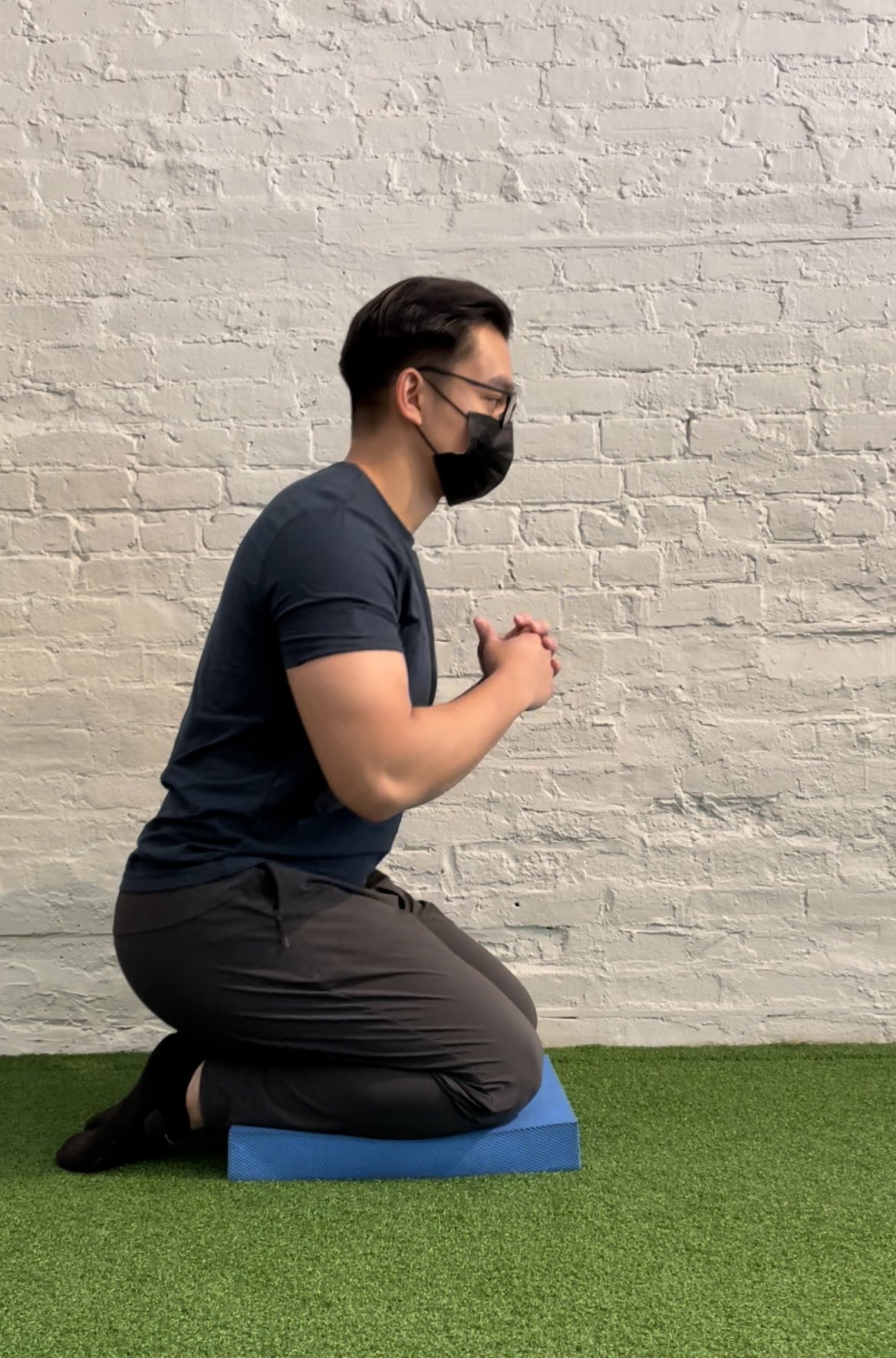When talking about the squat, a common ‘problem’ that is frequently brought up is the ‘butt wink’. A ‘butt wink’ refers to when an individual rounds their lower back as they approach the bottom position. It’s called ‘butt wink’ because it looks like the butt is ‘winking’, rather than staying stable throughout the movement.
It is often blamed for causing or contributing to lower back pain, since the spine is loaded in a flexed position. It is important to note that there is an unavoidable amount of forward bending that occurs at the lumbar spine with all individuals during a deep squat, and it usually only warrants attention if there is pain with it.
Before discussing solutions, it is important to go over what actually happens in the lumbar spine and pelvis during a butt wink. As the athlete approaches the bottom of a squat, flexion or rounding in the lumbar spine is accompanied by a posterior pelvic tilt. This dipping motion usually reverts back to the starting position as the athlete ascends from the bottom position. This quick reversal of movement in the lumbar spine and pelvis is why it is termed “butt wink”.
Starting Position
The Butt Wink™ can happen simply due to the starting position of the pelvis in relation to the lower back. If the athlete starts with hyperextension in the lumbar spine, usually accompanied with anterior pelvic tilt, the “butt wink” will appear more prominent, as the lumbar spine and pelvis is moving from one extreme of motion to the other (from hyperextension to flexion). In this case, addressing the starting position of the pelvis and lumbar spine can reduce this movement significantly. See video below for a demonstration:
Mobility
From a mobility standpoint, we must break down the squat into the demands on each individual joint, since achieving a deep squat requires close to end-range flexion across the ankles, hips, and knees. If we are lacking motion in any of these areas, the lumbar spine and pelvis can compensate by going into flexion and posterior pelvic tilt in order to achieve depth.
Assessing Ankle Mobility
We can take a bottom up approach when assessing the squat and start at the ankle joint. Getting to the bottom position requires end-range ankle dorsiflexion and is often the main limiting factor for athletes getting into a deep squat position. We can assess this motion by using an ankle wall test:
The exact amount of motion needed varies across different body types and morphologies, but a general guideline is if the athlete can touch their knee to the wall with their heel down and their big toe at least a hands-width away from the wall, they have adequate ankle mobility for the squat.
Assessing Knee and Hip Mobility
If we determine the athlete has sufficient ankle dorsiflexion, we can direct our attention to the knees and hips. To screen knee flexion, we can use the tall kneeling position and transition to short kneeling to assess ability to bend the knees.
To screen for hip internal and external rotation, we can use the hip 90-90 position, as limitations here can restrict end-range hip flexion.
Stability
Butt wink can also occur due to the inability to maintain tension at the bottom of a squat. If this is the case, we can assess breathing and work on positional stability where limited.
Keep in mind that everyone’s squat will look different due to differences in body proportions. Assuming there is no pain, butt wink falls into the category of individual movement differences and may not necessitate a change.






